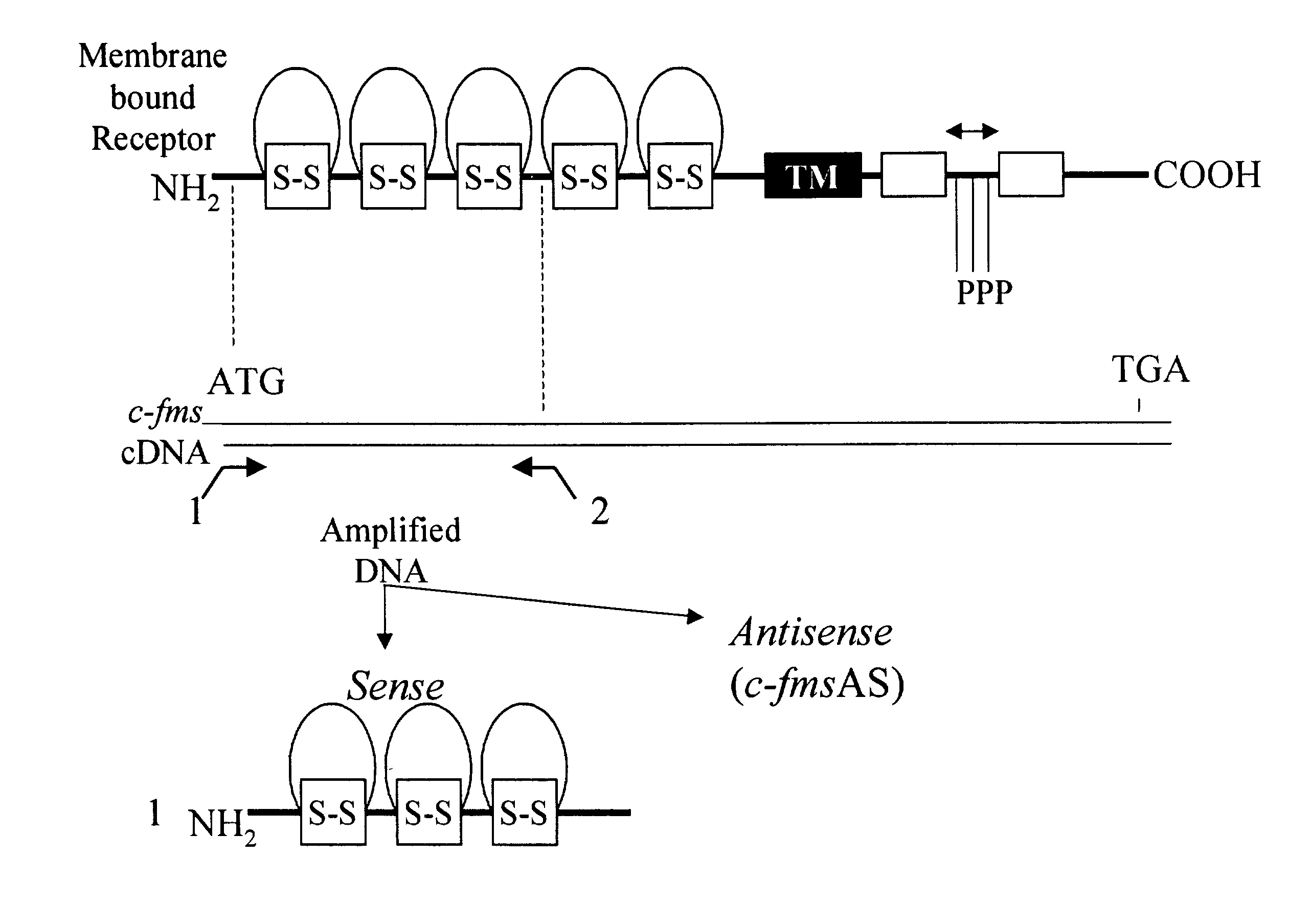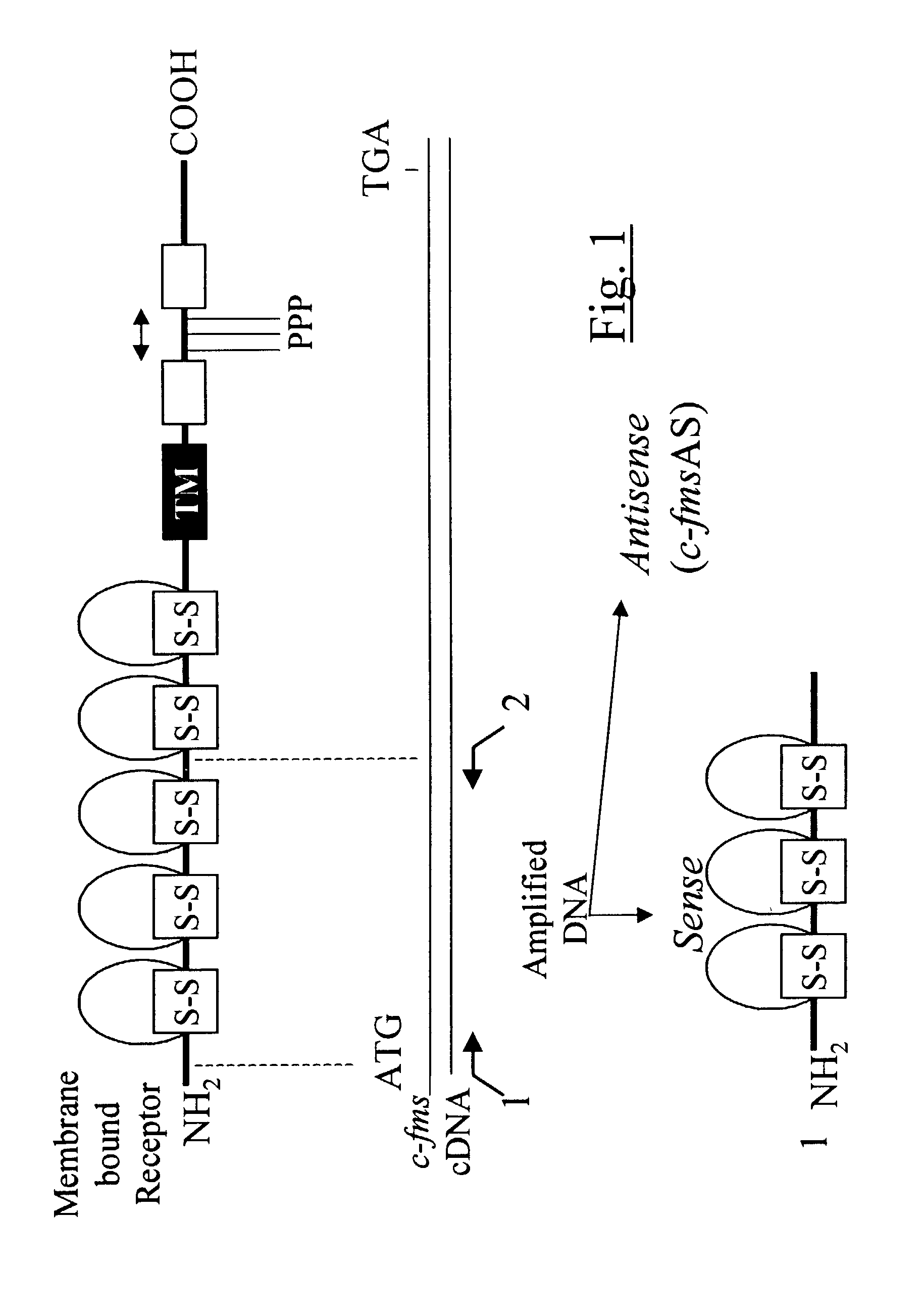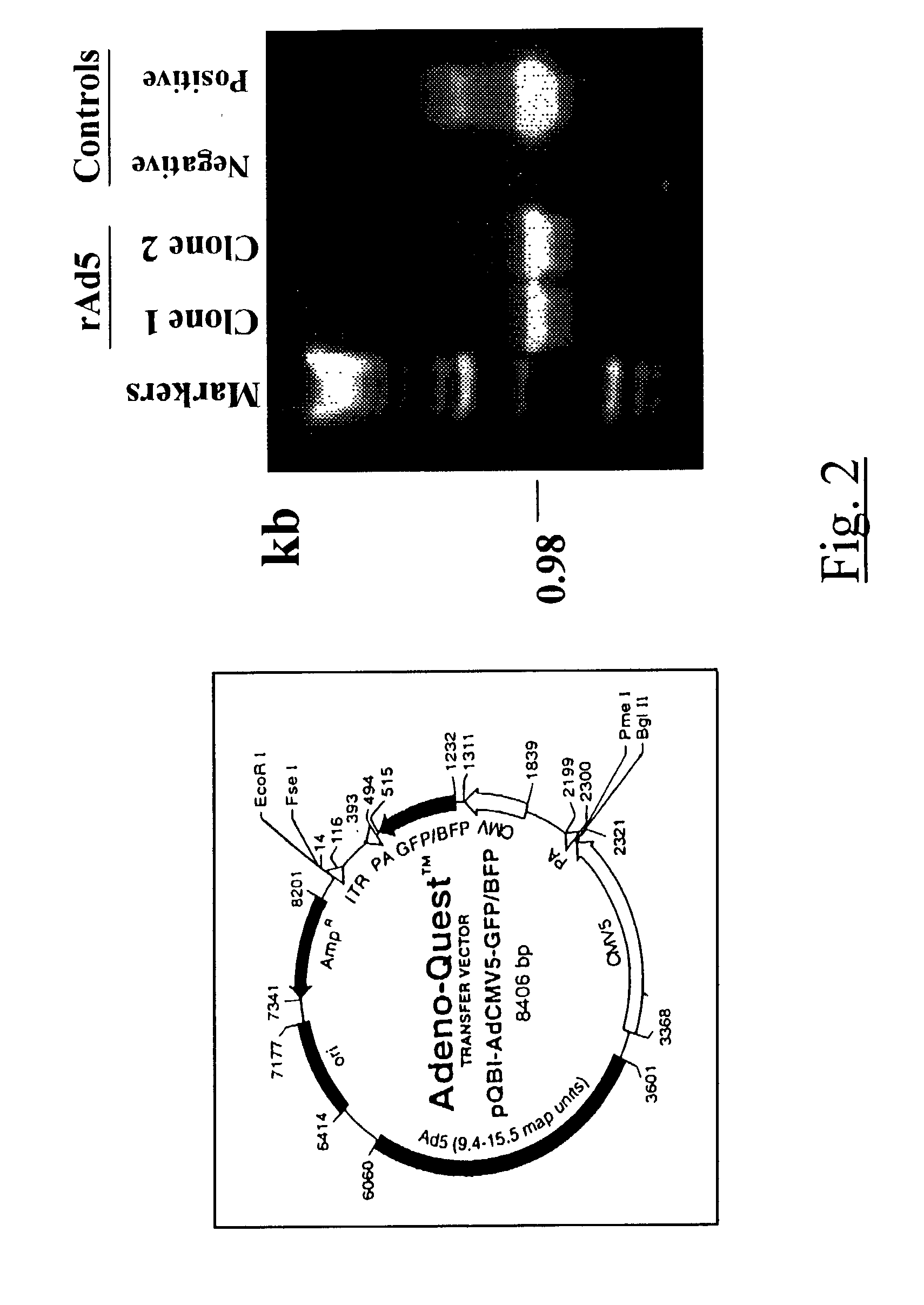Methods for inhibiting macrophage colony stimulating factor and c-FMS-dependent cell signaling
a technology of c-fms and macrophage colony, which is applied in the direction of viruses, drug compositions, cardiovascular disorders, etc., can solve the problems of affecting the expression of c-fms, affecting and affecting the effect of mcsf, so as to inhibit the expression of mcsf. the effect of gene expression
- Summary
- Abstract
- Description
- Claims
- Application Information
AI Technical Summary
Benefits of technology
Problems solved by technology
Method used
Image
Examples
example 1
Cloning of c-fms Gene Sequences Expressing Antisense RNA or Soluble Protein
[0059]RT-PCR was performed to amplify c-fms gene DNA sequences corresponding to the ligand binding domain of the receptor using specific sets of primers on the DNA template produced from mouse or human macrophage mRNA. Human macrophages were grown from peripheral blood monocytes following standard protocols. Mouse macrophages were derived from bone marrow cells. Total cellular RNA was isolated by lysis of mouse or human macrophages in guanidinium isothiocyanate, phenol-chloroform extraction and ethanol precipitation. P Chomzynski, N Sacchi. “Single-step method of RNA isolation by acid guanidinium thiocyanate-phenol-chloroform extraction. Anal Biochem. 162:156–159 (1987). To amplify the mouse and human c-fms gene sequence corresponding to the ligand binding domain (FIG. 1) two primers (cfms-1, SEQ ID NO. 5, nucleotides 75 to 93; and cfms-2, SEQ ID NO. 6, nucleotides 994 to 1008) were synthesized corresponding ...
example 2
Construction and Purification of Recombinant Adenoviral Viral Vectors Expressing Either Antisense RNA or Soluble Protein
[0060]The choice of the Ad5 gene delivery system for c-fms gene was based on its ease of use, and many attractive features that allow the efficient transfer of genetic material as compared to other viral and non-viral (e.g., “naked” DNA or lipid coated DNA) gene delivery systems. Ad5 produces stable virions with high titers that are capable of transducing replicative and non-replicative cells. Ad5 has a wide host and tissue range and exhibits low pathogenicity in humans.
[0061]A 976 base pair EcoRI fragment of mouse c-fms cDNA was excised from pCRII plasmid and gel purified. For recombinant adenoviral transfer vector construction, BgIII linkers were attached to the 976 base pair fragment comprising the protein coding region of c-fms gene. This fragment was then ligated to a BgIII linearized transfer vector pQBIAdCMV5-GFP (Quantum Biotechnology, Inc., Montreal, Quebe...
example 3
Adenovirus Mediated c-fms Gene Transduction in Cultured Human and Mouse Macrophages
[0064]Macrophages, derived from either from human peripheral blood monocytes or from mouse bone marrow, were transduced with adenoviral vectors expressing antisense c-fms RNA (Ad5CMVc-fmsAS) or soluble c-fms protein (Ad5CMVc-fmsSA) linked to green fluorescence protein (GFP) to allow sorting of positive transfectants. Transfection efficiency of the recombinant virus at different MOI was determined by direct visualization and flow cytometric analysis of GFP fluorescent activity. The repression of c-fms in Ad5CMVc-fmsAS transduced macrophages was assessed 2 to 3 days post transduction by flow cytometry using human or murine c-fms specific antibodies. Antisense c-fms RNA effectively inhibited the expression of c-fms protein as shown by immunoblot analysis in a dose and time dependent manner. Cultured macrophages showed reduced growth in response to both antisense c-fms RNA expression and with the expressi...
PUM
 Login to View More
Login to View More Abstract
Description
Claims
Application Information
 Login to View More
Login to View More - R&D
- Intellectual Property
- Life Sciences
- Materials
- Tech Scout
- Unparalleled Data Quality
- Higher Quality Content
- 60% Fewer Hallucinations
Browse by: Latest US Patents, China's latest patents, Technical Efficacy Thesaurus, Application Domain, Technology Topic, Popular Technical Reports.
© 2025 PatSnap. All rights reserved.Legal|Privacy policy|Modern Slavery Act Transparency Statement|Sitemap|About US| Contact US: help@patsnap.com



